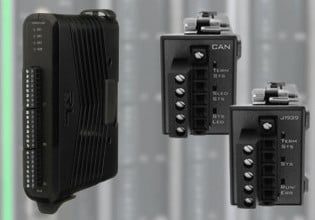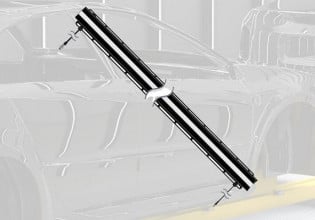Schunk System Enables Automatic, Quick Change of Gripper Fingers
The new BSWS-R jaw quick-change system from Schunk automates tool changes, reducing downtime during robotic manipulation of parts and enabling greater manufacturing flexibility.
Schunk has developed a system for quickly changing gripper fingers on robotic arms. The new BSWS-R enables robots to automatically change components without lengthy downtimes or manual manipulation by operators. This drastically speeds up operations where one robot must perform several tasks, such as assembly and packaging operations.

Rather than manufacturers having to change a robot's entire gripper manually, the BSWS-R automates gripper finger changes. Image used courtesy of Schunk
The BSWS-R System
The speed at which a robot can change grippers depends on how many operations must be performed to remove the old gripper and place the new one. With Schunk’s automatic jaw quick-change system BSWS-R, the gripper is held in place with two adaptor pins. Additional fingers are stored in a storage rack near the robot. When a tool change is required, the robot places the fingers in an empty slot in the storage rack, removes the pins, selects the next gripper, replaces the pins, and is ready for the next operation. All of this happens in under three seconds.
One of the neat features of the BSWS-R system is that engineers can design new robot fingers and grippers that it can use. All that is needed are extra storage slots and a few critical dimensions, such as pin locations and overall size. This adds flexibility to the system and ensures that it will not become obsolete in the near future.

With the BSWS-R, tool changes take place in under three seconds. Image used courtesy of Schunk
The Move Towards Smaller Lots
For many years, the goal of manufacturing has been to produce oodles of identical products. By doing so, manufacturers take advantage of economies of scale, bringing down costs and ensuring they reach a larger customer base. Many people get a product that meets most of their needs at an affordable price. On the manufacturing end, identical products mean fewer tooling changes, easy troubleshooting and quality control, and the reduction of other time-consuming activities.
Recently, thanks to automation, there has been a drive to make smaller, more customizable lots of products. Instead of developing a product that meets part or most of the consumer’s needs, it can be tailored to meet virtually all of their expectations. All components of the final product are mass-produced, but the assembly process is customizable, such that different components are selected for each build.

The BSWS-R brings greater flexibility to companies’ production. Image used courtesy of Adobe Stock
This has always existed for large ticket items such as cars. While all parts are mass-produced, any particular car may be customized with leather seats, sunroof, alloy wheels, or not, based on the customer’s preference. Current trends show that this type of production is reaching less expensive items, such as sporting goods (interchangeable stocks on rifles) and electronics (specific chipsets and options soldered to the motherboard).
A robot that can quickly switch tools to handle smaller, more customizable products will benefit from these changes.
Flexible Robot Automation
The ability to perform quick change tooling operations will make Schunk's BSWS-R popular among industries that are switching to small, customizable production lots. It will also benefit startup companies with few robots but plenty of tasks to automate. Besides this, robotic systems engineers will appreciate the flexibility in design possibilities afforded by the new system.






